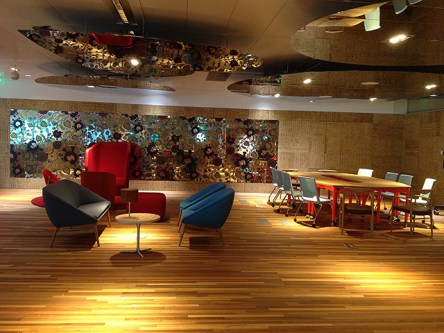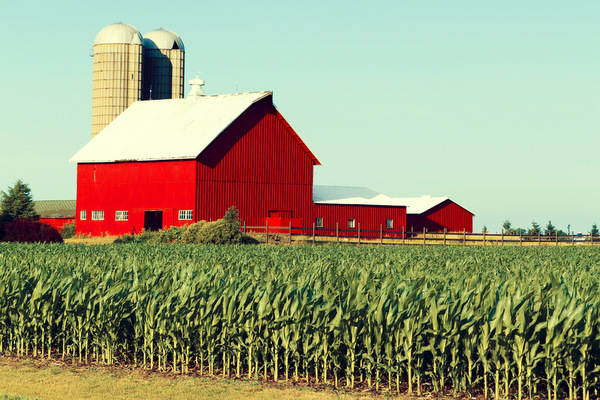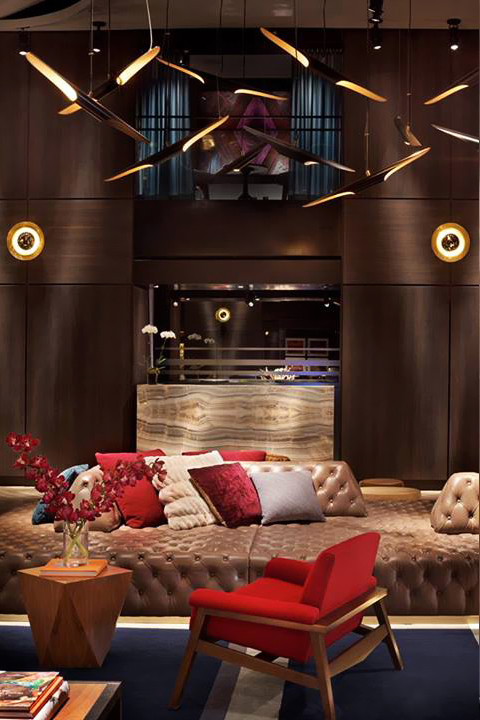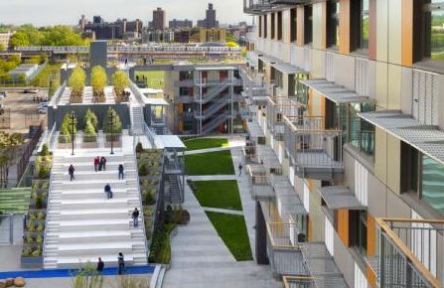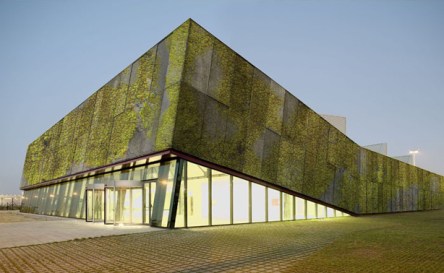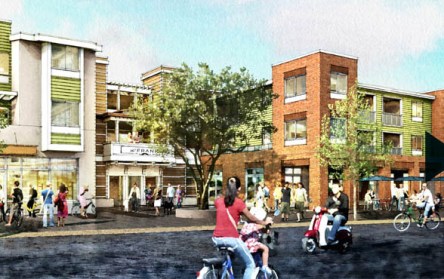The U.S. Green Building Council (USGBC) officially launched LEED v4, the newest version of the LEED green building program, at the Greenbuild International Conference and Expo in Philadelphia. Ever since the first LEED Pilot Project Program (also known as LEED Version 1.0) was introduced at the USGBC Membership Summit in August 1998, the LEED, or Leadership in Energy & Environmental Design program, has revolutionized the way buildings and communities are designed, constructed and operated. Whereas the first series of rating systems were developed to largely address the needs of owner-occupied new construction commercial buildings, the program has grown, evolved and expanded to encompass the different project development and delivery processes that exist in the U.S. building design and construction market, through rating systems for specific building typologies, sectors and project scopes: Core & Shell Development, New Construction and Major Renovations, Schools, Existing Buildings: Operations & Maintenance, Neighborhood Development, Retail, Healthcare, Homes, and Commercial Interiors. Moreover, LEED seeks to accelerate green building demand, delivery and accessibility and optimize the use of natural resources. While still based on the essential principles advocated by its previous versions, LEED v4 brings a plus of coherence and efficiency to the whole process. “LEED v4 is a quantum leap for LEED,” said Rick Fedrizzi, president, CEO and founding chair, USGBC. “Over the past 15 years, LEED has fundamentally revolutionized how we design, construct, operate and maintain our buildings and communities. LEED has created a completely new industry of business enterprise committed to energy savings and efficiency. LEED v4 is as much a testament to the achievements of LEED project teams around the world as it is to the green building community’s ambition to create significant global and local change through resource-efficient, cost-effective green buildings.” The program’s goal is to foster...
Agriburbia
Developing amidst farmland
The community garden just isn’t big enough anymore. And when it comes to creating a residential neighborhood that will embody sustainable practices, the local food movement, and love of open spaces, agriburbia has come forward as an exciting alternative. Never heard of it? Neither had I, until a few weeks ago. But just the name agriburbia instantly interested me. I pictured strip malls being razed for cornfields in the suburbs, a farm stand on every corner, organic, local-sourced salad on every dinner table. Impossible utopia? Not quite. Agriburbia, it turns out, is already thriving in numerous states around the nation. My research revealed experiments with the model in Virginia, Vermont, North Carolina, Idaho, Illinois, Georgia, Wisconsin, Colorado and California. It’s also catching on in Canada, where it’s the focus of an academic research effort. “The resulting agriburban zones, defined as suburban forms in which agriculture plays a significant role, are of increasing importance as a site of local food production, of affordable housing on the urban fringe, and of settlement regions for migrants from agrarian backgrounds,” notes the Agriburban Research Center at the University of Fraser Valley. The logic is simple: growing food in far-off places, and shipping it to grocery stores, only decreases quality and increases cost. Once upon a time in North America, we grew the produce and raised the animals we needed to live right in our own communities. As cities and suburbs grew fast and furious, farms were pushed further and further to the outskirts. The agriburbia movement aims to bring them back into view. The Urban Land Institute estimates that up to 200 such projects are developed or in progress. According to Agriburbia.com, there are 3,000 acres of such land in or under development and production. Imagine wandering out onto the back porch to be greeted not by a useless bed of roses, but a wholesale volume seasonal garden, cared for by communal effort and producing enough produce to feed not only the houses of the neighborhood, but to be sold within the surrounding community. Individual agriburbia models differ in how the agricultural space is integrated with residential housing. In some, residents can get actively involved on the farm – which is typically a mid-scale, commercially viable ag operation – and receive fresh food in trade for their labor. Don’t want to work? Not a requirement. You can purchase your produce and not perform manual labor. One exceptional example of the model takes place at Prairie Crossing in Grayslake, Illinois. Here, residents don’t participate in the farming activities, but the adjacent 100-acre farm, Sandhill Family Farms, produces food for a CSA (Community Supported Agriculture) share plan with 350 customers. Learning Farm activities introduce residents to small-scale farm and food production options they can implement in their own backyards. Demand for the lifestyle is evident. Prairie Crossing easily sold out all of its 359 homes and is now marketing 36 condominiums. It’s not a new community, and finds itself serving as a role model for up-and-coming agriburbia efforts around the nation. As one homeowner put it when speaking to “Midwest Living”: “I don’t look at Prairie Crossing as anything new…It’s a return to creating a community network of support that was part of American culture before World War II.” Would you consider life in an agriburbia community? What do you think are the most valuable aspects of the...
Learning to Like LEDs...
Bulbs gain multifamily traction
Multifamily professionals are torn when it comes to LEDs. While many love the idea of a bulb that lowers utility bills without sacrificing brightness, they aren’t in love with the high upfront costs. It can also be hard to tell when it’s worthwhile to invest in LEDs when halogen, fluorescent, CFL, or even incandescent bulbs might suffice. A few tips might make the decision easier. When it comes to longevity, LEDs are hard to beat. LED lamps can last up to 50,000 hours, outliving the average incandescent bulb by more than 10 times. This makes them ideal for hard to reach places like stairwells, parking lot posts, and ceiling-mounted security fixtures. LEDs are also incredibly useful for fixtures that must stay lit day and night. The light emitting diodes also have less practical and more fashionable applications. LEDs are now more versatile than ever, making them ideal for eye-catching applications in hip, newly constructed buildings. Different colors and warmths allow lighting designers to explore endless interior and exterior possibilities. Like their incandescent cousins, LEDs can now be dimmed, a feature that designers have craved for years. There is even a new line of OLEDs with thin, flexible lamps that promise innovative new creations like poster-thin televisions for fitness centers and bedroom windows that turn into lamps at night. Though the advantages of LEDS are evident, you must first make sure that you can provide the proper housing for the bulbs to reap their full potential. The longevity of LEDs helps the lamps to pay for themselves in just 4-6 years but such returns aren’t a sure thing. James Youngston, IALD, LC Principal at Gabler-Youngston explains, “Retrofit lamps are rated for 50,000 hours but that’s based on turning them on is sockets by themselves, not...
Green and Affordable
Eco-friendly low income options
Green building has gained momentum in the affordable housing sector, providing some of society’s marginalized residents with hip, eco-friendly—and budget friendly—living accommodations. It has been a long time coming but it is finally here: affordable housing has blossomed from the ugly ducklings of architecture into beautiful swans, complete with coveted interiors, state-of-the-art green features and unique exteriors that boost local pride. As experience plucks away the myths that surround green building expenditures, more cities seek developers who are willing to offer sustainable, beautiful solutions for low-income housing. This shift is a reasonable route to take; studies suggest that low-income residents are in the greatest need of cash savvy and health conscious resources. The Uphill Crawl Just as quickly as builders gained consciousness of sustainable development in the 60s and 70s, they seemed to forget. By the 1980s, green building lost its momentum. The housing industry witnessed a notable increase in green building projects at the turn of the 21st century. Though the economy struggled towards the end of the first decade, the number of green building projects in the pipeline continued to increase. Such proposals and have now reached record heights. While the amount of green building certifications increased for traditional housing, businesses and institutions, green affordable housing lagged woefully behind. Various organizations released reports on the benefits of green building within affordable housing—such as The Cost and Benefits of Green Affordable Housing and Green Affordable Housing Within Our Reach—but cities and builders proved slow to catch on. Within the last seven years, however, this sector has welcomed an influx of environmentally conscious projects. Planetizen released a summary of Global Green USA’s Progress and Possibilities Report, indicating that affordable green building has become a priority for many states’ Qualified Allocation Plans. States now implement...
Creative + Sustainable...
Green development and design
As capital and operating costs continue to rise, businesses seek creative ways to reduce expenses while passing benefits to their clientele. A solution rests under their feet. Poorly-planned infrastructure leads to long term financial burdens on businesses and the communities in which they reside. By implementing sustainable infrastructure techniques, businesses can reduce maintenance expenses and minimize the need for infrastructure related tax increases. Such businesses will also appeal to the new generation of consumers who value innovation, sustainability, and responsible growth. Sustainable storm water management is a commonly overlooked aspect of green building yet it proves to be a worthy foundation upon which any business can establish better practices. A series of studies executed by American Rivers, the Water Environment Federation, the American Society of Landscape Architects and ECONorthwest uncover the numerous benefits of environmentally conscious storm water management. The report, issued by the Sustainable Cities Institute (SCI), concludes that green infrastructure can reduce upfront development costs, minimize the cost of future maintenance, and decimate daily operating costs. Those may seem like high claims for simply redirecting rainwater, but the evidence proves to be compelling. A new perspective on age-old problems Traditional urban planning treats storm water as a problem that requires billions in funds to rectify. A new line of thought approaches storm water as an asset that can be used to reduce operating costs and beautify man-made sites. The premise of the new mindset is simple: capture and treat water where it falls, rather than channeling it to a centralize system. In doing so, the water’s power may be harvested and the challenges of transporting contaminated runoff are minimized. Businesses interested in alternative infrastructure have several green options from which to choose, including porous pavement, street trees, green roofing, rain gardens and...
Really Recycling?
Assessing results
Whether municipally mandated, LEED encouraged or for altruistic reasons, commercial property owners and managers are taking steps to encourage recycling. It can be challenging. Ultimately, it falls to the tenant and the cleaning crew—and in the case of retail properties, the general public—to comply with the program. But some creative efforts are producing results. Office properties provide a particularly strong opportunity for managers to encourage recycling through multiple channels of contact. A comprehensive program of education for building occupants and vendors is the centerpiece of encouraging participation. Last year, SL Green Realty Corp. and its vendor, IESI Corp., held town hall meetings at more than 30 office buildings in the company’s metropolitan New York City market. They also met separately with maintenance staff at the properties. Director of sustainability Jason Black reported that materials separation improved noticeably after the meetings. SL Green’s 2013 outreach effort will follow the town-hall format, with individual tenant meetings. Outreach also helps identify one person in every office who is willing to champion recycling and serve as the recycling liaison. Additional recycling containers are on the way, as well. Indeed, providing plenty of collection bins goes a long way toward making recycling easy, and many owners, like Swig Equities, offer opportunities for tenants to dispose of items that are more challenging to recycle, as well. Swig’s Mills Building in San Francisco, for instance, works with Green Citizen, an environmental services company, to organize e-waste recycling drives, offer pickups of discarded electronic equipment and provide an on-site kiosk for disposal of batteries, toner cartridges, cellphones and other small items. While incorporating spaces for recycling categories is standard practice for new building design, though, it can be more challenging to find appropriate spaces in older properties. Unlike buildings designed to accommodate...
Focus Green
Earth Day all year at Alliance
Today, April 22, is Earth Day. Alliance Residential Company is among the Yardi multifamily clients that will mark the occasion: A tree will be planted at almost every Alliance community this week, except those that are in exceptionally urban environments or have special circumstances. “The goal is to plant a tree at the majority of our Alliance communities,” said Kelly Vickers, Alliance’s National Director of Sustainability. “Trees do so much for the environment: filtering air pollution, reducing soil erosion, creating shade, helping recycle water.” Alliance’s facility directors, who oversee 257 apartment communities across 13 states, worked with the companies’ regional landscaping vendors to coordinate the selection of appropriate local native trees, which will find new homes in the ground at each community site. The properties that can’t plant trees are helping out in a different way, such as supporting the Nature Conservancy’s “Plant a Billion Trees” campaign, which is working to preserve Brazil’s Atlantic Forest, an endangered tropical forest, and entails planting a billion trees by 2015. Each $1 donated equals one tree planted, and Alliance communities are encouraging their residents to support the cause. Broadening awareness about the benefits of sustainable living is just one aspect of Alliance’s Focus Green campaign, which was formally launched in 2012. Earth Day comes and goes in a flash. With Focus Green, Vickers and Alliance have developed a set of comprehensive principles to help guide the company toward a greener future. This year, the program will expand into action items that touch development, operations, training and administration. “The program has two overarching goals. The first is to reduce the consumption of energy and natural resources at our communities and our offices. The second is to educate, promote and support our associates’, residents’ and owners’ participation in more...
MB Real Estate
Serious about Sustainability
MB Real Estate (MBRE), a third party manager of multiple high profile commercial buildings in Chicago, sees sustainable property management practices as much more than good environmental stewardship. In fact, when talking to building owners or tenants about sustainable practices, MBRE’s Director of Sustainability focuses on the bottom line. More specifically, the triple bottom line. “It’s a matter of finding that equilibrium between the social, the environmental, and the economic aspect of everything we do,” said Natalie Stanley, assistant vice president for MB Real Estate, a Yardi client. The three pillars of the triple bottom line philosophy: people, planet, and profit, are cornerstones of MBRE’s sustainable efforts, which benefit multiple stakeholders: building owners, tenants, and the community at large. The firm’s portfolio includes five LEED-certified buildings that total 5.5 million square feet, and eight ENERGY STAR buildings that total six million square feet. The green building portion of the MBRE portfolio has been growing every year. The benefits are myriad, Stanley explains. “If you look at all the energy use in the city/world, it is primarily buildings and facilities that use the most energy. If we can collectively work with the owners and tenants to reduce consumption of resources like water and energy, they all benefit from that reduction in operating expenses. Conceptually that will add value to the building itself,” Stanley said. Energy efficiency has been a major thrust of MBRE’s sustainability efforts with building owners. “We focus on the base building systems and the operating schedules of the HVAC system. Changing the operating schedules is really important and that’s an easy fix, because it’s free. The building engineers just have to make modifications to the schedules. That’s an easy one to handle right off the bat,” Stanley explained. “We have most our...
Passionately Green
Changing Minds, Behavior
As an industry leader in sustainable development, Portland-based Yardi client Gerding Edlen is a step ahead when it comes to earth-friendly trends in apartment living. “Because we have such a passion for developing sustainable buildings, we wanted to ensure we were transferring the vision we have during development into the day to day management of the properties,” says Julia Razonable, Gerding Edlen Management’s Director of Operations. “One of the next ways to push the boundary in sustainability is to influence human behavior,” Julia explained. Gerding Edlen is dedicated to creating communities in its multifamily developments, fostering interaction between residents and providing a sense of attachment to the neighborhood beyond the property as well. The idea is to give people the environment and tools to live healthier, more-earth friendly lives. A recent event at one of their Portland communities, Cocktails and Compost, brought 100 residents together for drinks, distribution of compost bins, and a tutorial on how to compost at home. Portland has a citywide mandate for single family homes to compost their natural food and yard waste, and Gerding Edlen is fostering that adoption in multifamily complexes, too. “It was also our first zero waste event,” Julia mentioned. “All of the cups, plates, and napkins we used could be composted.” Julia, who studied sociology and psychology at Portland State University, says that sharing information and social connections between residents is very important. Each of the apartment communities she oversees has its own blog and Facebook page, where conversations range from when and where to find the next neighborhood farmer’s market to how to clean in a more environmentally friendly way. Well-developed social media networks have helped Gerding Edlen’s advertising outreach approach go green, too. The company also focuses great attention on the concept of...

